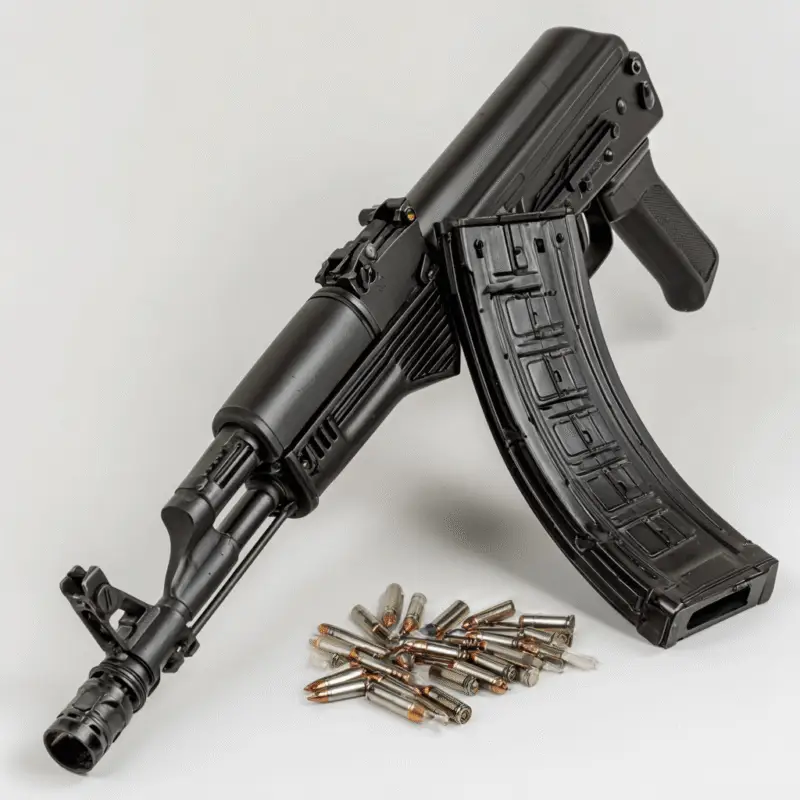Blog
Legacy of the KR9 and KP9

Legacies aren’t built overnight of the Kr9 Magazine.
They take decades of trial, error, and persistence. The Kalashnikov KR9 and its sibling might appear at first glance to be modern novelties in a market crowded with pistol-caliber carbines. But as I reflected on the past year of shooting, meeting fellow owners, and testing every component, I realized these rifles weren’t just another option. They were an American continuation of a story that began in post-war Russia.

Mikhail Kalashnikov, when he designed the original AK, never could have imagined a civilian shooter in Florida, Texas, or Montana running drills with a KUSA KR9 or a KUSA KP9. And yet, here we are—living proof that simple, effective engineering transcends time, politics, and geography.
What makes this legacy so remarkable is that it has been reimagined without losing its core. The Kalashnikov USA KR9, with its rugged polymer KR9 magazine, carries the DNA of the Russian Vityaz KP9 but reshapes it for the American market. It honors the simplicity that made the Kalashnikov name legendary while adding a layer of accessibility. Parts are available. Magazines are plentiful. The rifles are American-made. In a way, they are both homage and evolution.
When I took my first shot with the KR9, I expected reliability. What I didn’t expect was the feeling of carrying forward a tradition that had been stripped down to its essence. No frills, no marketing gimmicks—just a carbine that worked. And when I reloaded with the KR9 magazine, I wasn’t just inserting plastic and metal into a rifle. I was locking into place a piece of continuity, one that stretched from Russian factories to Florida workshops, from soldiers to civilians, from history into the present.
The same goes for the KUSA KP9. At first, many dismissed it as just another pistol-format novelty. But the KP9 magazine proved otherwise. With every cycle, every flawless feed, it reminded shooters that simplicity still beats complexity. The Kalashnikov KP9, especially when viewed next to the revered Vityaz KP9, showed how far the design had traveled—and how well it adapted to its new home.
What tied these experiences together wasn’t just mechanical excellence. It was the people. The retired reservist who praised the mags at my local range. The teacher who used the Kalashnikov KP9 to inspire his robotics students. The sheriff who chose the KUSA KR9 for his department’s patrols. The firefighter who reminded us that resilience mattered both in rifles and in life.
This human dimension turned what could have been just another firearm into something more. It became a bridge. Not just between shooters, but between values. Reliability. Durability. Trust. These weren’t abstract marketing slogans—they were lived realities. And they were embodied in the KR9 magazine and KP9 magazine, the quiet workhorses of the platforms.
The twist came when I realized this brotherhood wasn’t confined to the United States. Online, I began to see international voices chiming in—shooters from Europe, Asia, and even Africa, many of whom couldn’t own the rifles themselves but admired them from afar. They compared their own platforms, debated design principles, and often expressed envy that Americans had access to Kalashnikov USA KR9 builds.
One voice stood out. A former engineer from Izhevsk, where the original Kalashnikov rifles had been born, wrote in a forum thread: “You do not just have rifles. You have carried forward what my grandfather’s generation started. But you have improved it. The world notices.”
Reading that, I felt the weight of history. These weren’t just rifles. They were symbols of continuity. Of taking something proven, adapting it, and carrying it forward in a way that was uniquely American.
And it wasn’t just about the rifles themselves. The magazines—the humble KR9 magazine and KP9 magazine—were the glue. They weren’t flashy, but they were flawless. They ensured the rifles ran without complaint, reinforcing trust with every cycle. In a way, they were the quiet guardians of the legacy.
Looking back on my own journey, I realized the KR9 and KP9 had given me more than reliable firearms. They had given me community, friendships, stories, and even a sense of connection to history. They reminded me that sometimes the simplest tools are the ones that last.
On a crisp autumn evening, as I packed up from the range, I took one last look at my gear. The Kalashnikov KR9 lay beside its magazines, scratched from use but running smoother than the day I bought it. The KUSA KP9 sat next to it, its compact frame ready for another round of testing. And next to them, a row of KR9 magazines and KP9 magazines, each a testament to thousands of rounds fired, each a piece of a much bigger story.
The sun dipped low, painting the horizon orange, and I thought about what it all meant. These weren’t just rifles. They were bridges across time, space, and culture. They were proof that good design endures, adapts, and finds new homes in unexpected places.
As I locked the case and headed home, I knew one thing for certain: the legacy of the Kalashnikov KR9 and Kalashnikov KP9 wasn’t ending here. It was just beginning—shaped not by hype or marketing, but by reliability, community, and the quiet confidence of a magazine that always fed true.
